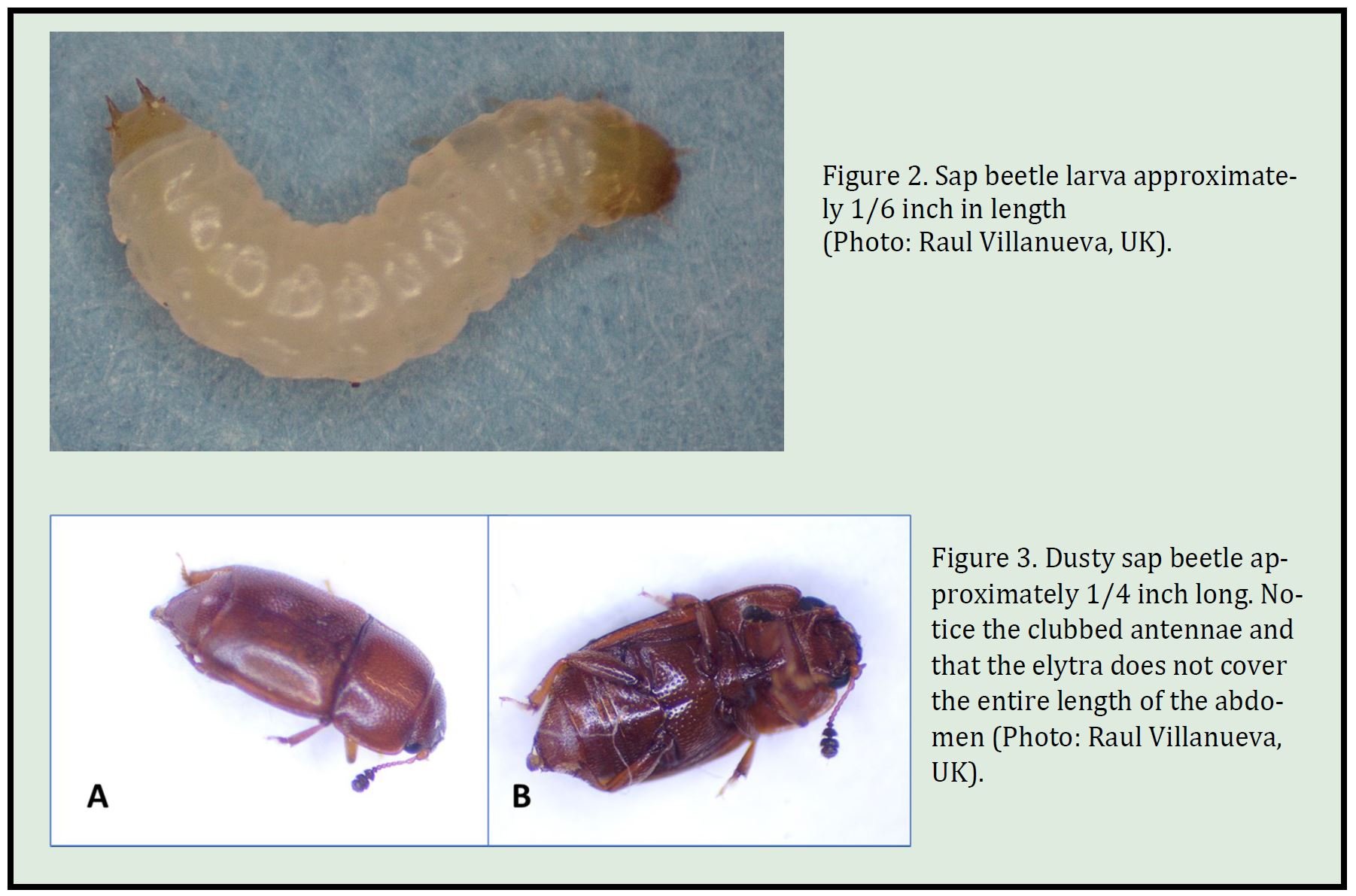Opportunistic Secondary Pests on Field Corn: Sap Beetles
During the last week of August, I received a corn sample that had an infestation of whitish color larvae on the ears. These larvae were feeding in the ears and making holes in intact kernels as shown in Figures 1 and 2. Also, small size, dark brown color beetles were found in this sample. These specimens were identified as the dusty corn sap beetle. Sap beetles are secondary pests of corn. They are opportunistic invaders that detect damage by other pests. Adult sap beetles feed on corn silk and pollen, chew on tassels, and larvae feed on kernels as described above. There are studies that showed high numbers of sap beetles in ears damaged by corn earworm. Corn earworms and other pests (i.e., Japanese beetles) provide entry sites for the sap beetles.
Description of sap beetles and life cycle
The larva of corn sap beetle is approximately 1/4 inch long, white, with a light brown head and hardened projections from the end of their abdomens that are species-specific (Figure 2). Adult sap beetles can be recognized by the dark brown color and short wings that do not cover the entire length of the abdomen, near 1/8 in. long, and eleven segmented antennae (Figures 3A and 3B). The club-shaped antennae are slender except for the last few segments, which are distinctly enlarged into a club (Figure 3).
These beetles overwinter as adults in sheltered areas, and in the spring, eggs are laid on decomposing vegetation or in the ground. Sap beetles can complete their life cycle from 20 to 45 days depending on temperatures, and there can have many generations per year.
Management
Economic losses due to sap beetle damages are minimal, and the use of insecticides for the control of sap beetles on field corn are not practical. In areas where the problem is frequent, plowing under crop debris will reduce overwintering and breeding sites for sap beetles.
More information
Dowd P. F. 2000. Dusky sap beetles (Coleoptera: Nitidulidae) and other kernel damaging insects in Bt and non-Bt sweet corn in Illinois. J. Economic Entomology. 93(6):1714-20.
Utah State University. Sap Beetles



